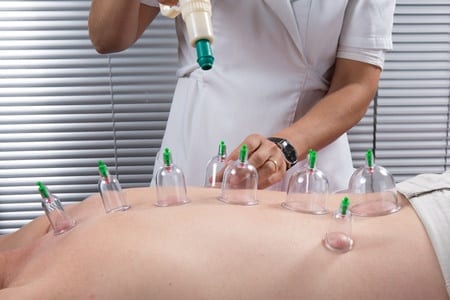
The Olympics have now ended and another global event of fanfare and record-breaking is now in the books. While the games may have ended, one thing is still on everyone’s mind: what is cupping? The 2016 Summer Olympics made the practice famous as viewers and fans noted large circular discolorations on many of their favorite athletes’ bodies. Cupping took the Olympics by storm this year, particularly in swimming, but the practice is actually much older than these Olympics.
Cupping because in 300 AD in a book by a Taoist herbalist describing a number of “prescriptions for emergencies”. It referred to the use of bamboo jars as suction devices that are placed on the skin (today’s athletes likely used small glass cups instead). A practitioner can create the suction from the cups by lighting rubbing alcohol under the cup on fire and place it against the skin (the fire burns the alcohol but the change in temperature allows for a suction effect). This does not burn the skin, but just creates the suction effect.
Once the suction takes effect, the cup can be moved across the skin. This causes the muscle layer to slightly come up as the cup moves and creates upward pressure on the skin (as opposed to a massage which does the opposite). It often leads to a relaxing sensation, which is why so many athletes like it. The cups can be left on the skin for ten minutes or so once the suction starts as the patient relaxes.
The idea is that the movement of the muscle and the relaxation leads to increased blood flow and potentially better healing or function- similar ideas as those in support of massages. Some users like to combine cupping with other methods including massaging. For those especially inclined to eastern medicine, acupuncture is another popular option. Both acupuncture and cupping follow the lines of the meridians on the body as it strives to open certain ‘channels’ within the body.
While cupping was tremendously popular in the 2016 games, it continues to have its skeptics as do many forms of ancient healing. Medical professionals note the lack of scientific evidence on the effectiveness of cupping and attribute any benefit to perception or placebo. Athletes questioned on the matter did not seem to care, given the relatively low cost of the procedure and the impact the procedure had on their minds, which is a big part of competitive sports. Placebo effects may not be “real” against a comparator, but they are still real in terms of physiological impact- there is no doubt about that. If the swimmers actually felt it helped and experienced the placebo effect, then in turn their performance was enhanced as a result as well and one may argue that it was worth it. Nonetheless, more literature on the topic will likely emerge after the practice took the nation by storm this season. It will be interesting to see how the tactic of cupping holds up with time and in the face of new evidence.
Image credit: Sylvain Robin
